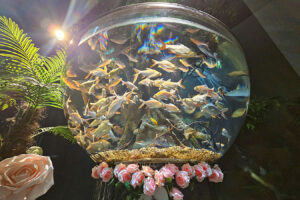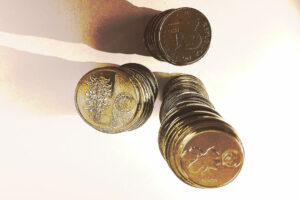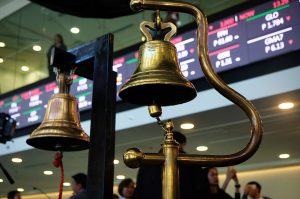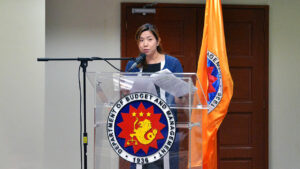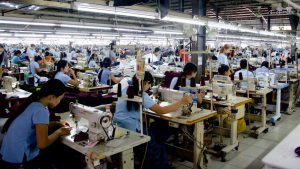By Chelsea Visto
THE CHANCE to embrace the simple charm of a quiet city attracts travelers as much as the opportunity to be immersed in the complex and often chaotic life of a busy center. It is the same for most destinations — the choice is often between the hustle and bustle of the metropolis or the hidden gems in roads less traveled.
In Korea, a tourist can opt to spend hours on end at the shopping-frenzied streets of Myeongdong in Seoul or the teeming Haeundae beach in Busan. But there is always an equally exciting alternative.
The cities of Daejeon and Sejong are definitely worth exploring — especially for frequent Korea visitors who have ventured into every nook and cranny of Gyeongbokgung Palace, enjoyed all four seasons in Nami Island, and have had enough of the thrilling rides of Everland.
Daejeon is in the central lowland valley of the Korean Peninsula while Sejong is in the west central portion. Both are approximately an hour’s drive from Seoul and are only around 30 minutes from each other by private transport.
While a day tour to either city is doable, spending several days to enjoy what Daejeon and Sejong have to offer is well worth it.
DAEJEON: KOREA’S SILICON VALLEYAs Korea is at the forefront of technology and innovation, it is not surprising that it also boasts of its own version of California’s Silicon Valley. Except that in Daejeon, they prefer to call their technology center the “City of Science.”
Daejeon is the hub for Korean technology and development, with science-oriented institutions in its midst. But even as research establishments tower over the metropolis, it has achieved a striking balance between art, culture, and science.
Whether they are looking for outdoor strolls with scenic nature views or indoor activities that offer spectacular sights, this capital city of North Chungcheong deserves a spot on a Korea tourist’s bucket list.
Near the Daejeon border is Ppuri Park, a popular family destination. The cultural site sits at the foot of Mount Mansung, far from the city center and during spring it is blooming with color and brimming with foliage.
The Romanized Korean word Ppuri directly translates to “root” in English, meaning “ancestry.”
While many Koreans share the same family names, like Park, Lee, and Kim, they may not be biologically related, given their different roots. Ppuri Park pays homage to family forebears and carves their names in their descendants’ history — stone and wooden sculptures are the park’s highlights, each representing a surname and its lineage.
Apart from sightseeing and hiking, the park offers several other activities — from navigating the swan boats on Daecheongho Lake, the third largest in Korea, to fun picnics and outdoor play areas, mostly for children. Entrance to Ppuri Park is free.
Going indoors, the Daejeon Expo Aquarium can spice up anyone’s itinerary. It has an underwater tunnel that runs beneath the Shinsegae Department Store in Daejeon, with a length equivalent to three blue whales.
The aquarium’s inhabitants include miniscule seahorses, stingrays, and different types of jellyfish. There are also dedicated tanks for clownfish and blue tangs, which inspired the pop culture icons Nemo and Dory from the animated film Finding Nemo.
The aquarium is also home to several internet-famous axolotls which draw considerable curious attention and rightfully so. The salamanders’ distinct pink color and endearing boba eyes guaranteed their becoming TikTok sensations.
Daejeon Expo Aquarium stages seasonal underwater shows, a fun experience for both kids and adults. Consider visiting in May to catch the immersive performances of real-life mermaids, who captivate spectators as they blow big bubble hearts.
The cost of admission to the aquarium ranges from 25,000 to 29,000 Korean won (approximately P1,060 to P1,200).
Shopaholics can also have their fill at the Daejeon Skyroad, which offers a great selection of take-home goodies and a bevy of restaurants for post-shopping dining.
Skyroad and its connected smaller alleys are filled with Korean beauty stores, shoe shops, and several samgyupsal places. Every few meters there are self-shoot photo studios, which Koreans popularized, and which have caught the fancy of Gen Z’s all over the world.
A quick stop at Baskin Robbins to try some of their unique ice cream flavors is recommended. The classic all-American ice cream chain has several unique flavors especially concocted for the Korean market.
For weary travelers who need a break from all the walking, exploring, and eating, the Daejeon Travel Lounge provides a respite. Found in the city center, the one-stop relaxation hub is mainly for tourists needing assistance with their travel itinerary, souvenir shopping, and general travel information which is available in English, Chinese, and Japanese.
After resting their weary feet, a tourist can gas up at the nearby Taehwajang restaurant which offers several gastronomic delights such as jjajangmyeon (black bean noodle sauce), sweet and sour pork, and a medley of Korean and Chinese dishes.
PLANTS, BEARS, AND PRESIDENTS AT SEJONGAn administrative center specially designed by the national government, Sejong is a self-governing city that values its green spaces while simultaneously developing local infrastructure. It prides itself as being a “smart city” that operates self-driving buses and artificial intelligence-powered patrol robots.
“I believe Sejong will one day be a leading city in Asia. I want the world to recognize our outstanding city,” Tourism Promotion Division Director Ahn Ki Eun told BusinessWorld.
Named after the country’s fourth king, Sejong is the youngest Korean metropolis. While smaller than most cities, it has many points of interest — a plantita paradise, a beautiful bear haven, and a repository of national history.
The Sejong National Arboretum rose to fame after it was featured in a couple of hit Korean dramas — Song Hye Kyo’s The Glory and Im Yoona’s Big Mouth — and should be the first stop of a Sejong sojourner.
The country’s first urban arboretum is home to over 1.72 million plants within a vast 65-hectare expanse. The botanical garden is eminently Instagramable, especially in spring when the flowers are in full bloom. With around 2,400 plant species, plantitas will have a field day for an entrance fee of only 3,000 KRW (P120).
The Four Seasons Exhibition Greenhouse is the crown jewel of the arboretum. It exhibits Mediterranean and tropical plants from various parts of the world. The tropical greenhouse simulates the sweltering Philippine temperatures, enabling common Filipino plants like ferns, bamboos, figs, and cordylines to thrive.
A zoo that doubles as an arboretum is a good second stop in the city. The Bear Tree Park is home to both farm and wild animals, including goats, fallow deer, rabbits, and peacocks, although the bruins are certainly the stars of the show.
A steep slope leads to the brown bears, but on the way, guests are treated to breathtaking beds of flowers and a panoramic view of colorful and interestingly shaped trees. A replica of Rodin’s The Thinker greets those who make it to the halfway mark of the trail. It is just one of many statues — mainly of bears — that dot the park.
At the end of the trail are the bear cages. Definitely daunting given their size, these bruins are nonetheless charming and even amusing as they appear to beg for food or play in their makeshift pond. The bears can be fed with carrots for 2,000 KRW (P80), which is on top of the park admission of 8,000 to 13,000 KRW (P340 to P550).
The Presidential Archives is an incredibly enriching experience for Sejong visitors. The four-story building is a museum of presidential items and gifts, portraits, and over 400 carefully preserved historical records. It showcases the 13 South Korean presidents and their contributions to the country.
The facility has special rooms replicating the presidential office, reception room, and even the media room to give a feel of the daily grind at the executive department. Tourists can sit on the sofas, stand on the podiums, and take photos to their hearts’ content.
Daejeon and Sejong presents varied choices depending on the traveler’s interest and serve as a refreshing break from Korea’s more famous destinations. The Korea Tourism Organization Manila has been promoting these alternative destinations and expects these cities to be the next gateways to Korea. Currently, the budget airline Aero-K has direct flights from Manila to Cheongju while Airmark Travel can tailor-fit an itinerary based on a visitor’s travel preferences.
As tourist arrivals have not yet reached the same levels as the more popular cities like Seoul and Busan, this may be the best time to experience and delight in what Daejeon and Sejong can uniquely offer — without the crowds.

